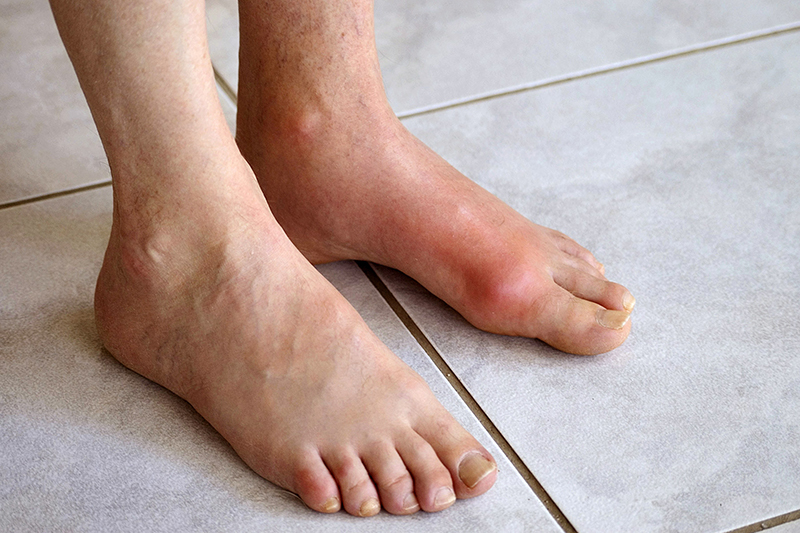
Uric acid is produced when the body breaks down purines, substances naturally present in many foods. While the kidneys typically filter out uric acid, too much of it in the bloodstream can lead to a condition known as hyperuricemia.
Persistently high uric acid levels may result in gout—a painful type of arthritis that usually targets the joints. Knowing how your diet influences uric acid levels is key to preventing gout attacks and keeping the condition under control. Here’s a comprehensive guide to what you should eat and avoid if you’re coping with elevated uric acid or gout.
What Causes High Uric Acid Levels?
An excess of uric acid can occur when the body either generates too much, doesn’t get rid of enough, or both. Common causes of high uric acid include:
- Use of medications like diuretics (often prescribed for fluid retention)
- Drinking too much alcohol
- Diets high in sugar and sugary beverages, especially those with fructose
- Genetic factors (a family history of gout)
- Kidney dysfunction
- Being overweight
- Medical conditions like metabolic syndrome or high blood pressure
Recognizing these triggers can help you manage your uric acid levels and prevent complications such as gout flare-ups or kidney stones.

Symptoms of High Uric Acid and Gout
Gout, which stems from high uric acid, typically manifests as sudden and intense joint pain, often beginning in the big toe. Other signs and symptoms include:
- Swollen, red joints
- Warmth or tenderness around affected areas
- Painful nodules under the skin (known as tophi)
- Kidney stones, which may cause back pain, blood or cloudy urine, and nausea
If you experience any of these symptoms, it’s important to consult your doctor for a thorough diagnosis and tailored treatment.
Foods to Avoid if You Have Gout
To help prevent gout attacks, steer clear of foods known to raise uric acid levels or trigger flare-ups. Here are some of the key ones to avoid:
- Red and Organ Meats
Beef, lamb, pork, as well as organ meats like liver, kidneys, and tongue are loaded with purines. Reducing your intake of these meats can help lower uric acid production. - Certain Fish and Seafood
Fish like tuna, anchovies, sardines, and herring, along with shellfish such as shrimp, lobster, and oysters, are high in purines and should be limited. - Alcohol—Especially Beer
Beer and hard liquor can disrupt uric acid elimination, triggering gout symptoms. While moderate wine consumption may be acceptable for some, it’s best to speak with your doctor for specific advice. - Sugary Foods and Drinks
Beverages and foods that contain high levels of fructose—such as soda, packaged fruit juices, granola bars, and some cereals—can raise uric acid levels. Cutting down on sugar-laden snacks and drinks is crucial. - Refined Carbohydrates (like white bread and rice)
Highly processed carbs are quickly metabolized, leading to spikes in blood sugar and uric acid. Opting for whole grains is a better option for gout management.

Recommended Foods for Managing Gout
On the flip side, several foods can support lower uric acid levels and reduce the likelihood of gout attacks:
- Vegetables
Though some vegetables like spinach, asparagus, and cauliflower were once thought to increase uric acid, research shows they’re generally safe in moderation. Most vegetables are low in purines and good for your diet. - Low-Fat Dairy Products
Skim milk, low-fat yogurt, and other dairy products can help reduce uric acid levels naturally. Choosing low-fat versions also helps keep inflammation at bay. - Plant-Based Proteins
Foods such as tofu, lentils, beans, and whole grains are excellent protein sources that are low in purines. Healthy fats, like those in olive or sunflower oil, also support inflammation control. - Citrus Fruits
Fruits rich in vitamin C, including oranges, grapefruits, and pineapples, promote uric acid excretion and can help prevent future flare-ups. - Coffee
Surprisingly, moderate coffee intake may assist in lowering uric acid levels. Just remember not to overconsume, as too much caffeine can bring its own risks. - Avocados
These creamy fruits are not only low in purines but also high in heart-friendly fats. They have anti-inflammatory properties that may ease gout-related pain and swelling.

Building a Gout-Friendly Lifestyle
Managing gout isn’t just about avoiding trigger foods. It also involves a broader lifestyle approach, including:
- Reaching and maintaining a healthy weight: Extra body fat can contribute to elevated uric acid.
- Staying hydrated: Drinking sufficient water helps the body flush out excess uric acid.
- Being active: Regular exercise improves circulation and supports healthy uric acid levels.
- Medication: In some cases, your healthcare provider may prescribe drugs to keep uric acid under control.
By paying close attention to what you eat and adopting healthier habits, you can significantly reduce your risk of painful gout episodes and keep your uric acid levels in check. If you’re unsure about what dietary changes to make, consider speaking with a healthcare provider or dietitian for guidance tailored to your needs.
Taking control of your nutrition and lifestyle can make a real difference in preventing gout attacks and improving your overall well-being.